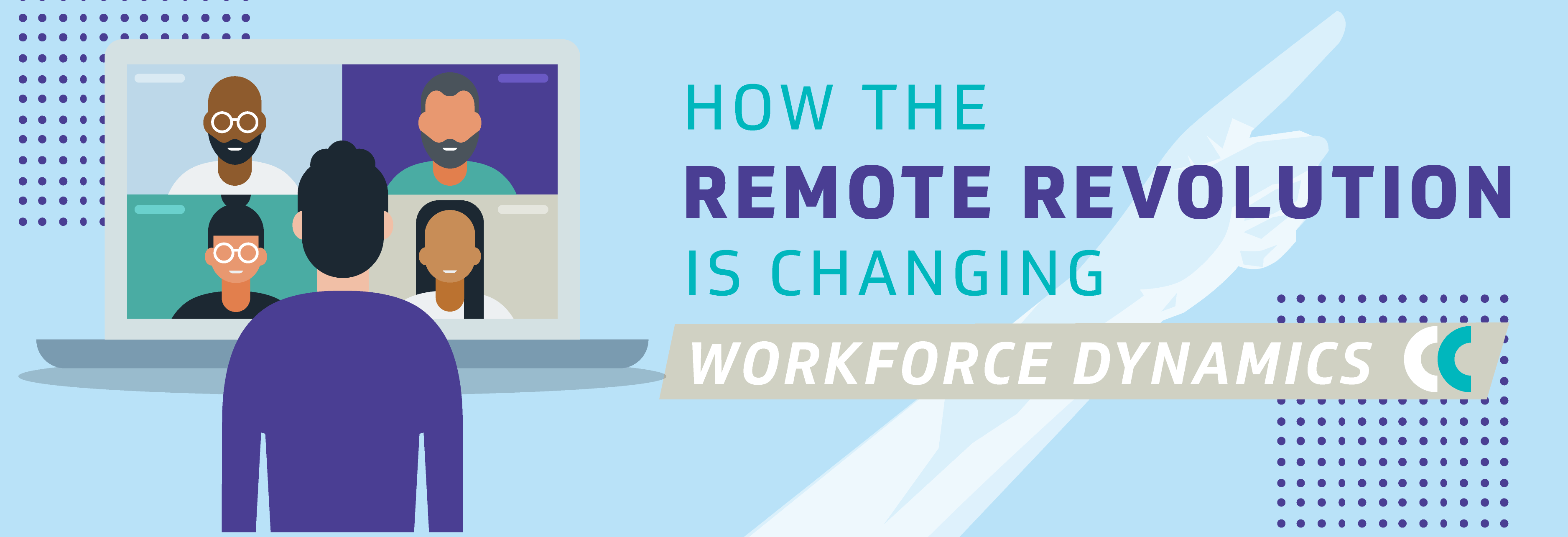
PUBLISHED APRIL 12, 2021
What happens when the world of work changes overnight?
In early 2020, the onset of the COVID-19 pandemic disrupted many of our long-established work traditions. Short strolls to the living room and virtual coffee chats quickly replaced morning commutes and water cooler conversations as millions of organizations transitioned to a fully remote workforce overnight. Although remote roles were prevalent years before the pandemic, we had never seen such a rapid and widespread shift in the way we work.
Years later, the accelerated virtual revolution has evolved from a temporary safety measure to a long-term practice. A Gallup study found that, as of July 2022, eight in ten people were working either hybrid or remotely.

Incentives will change for both job seekers and employers
In today's remote work landscape, organizations can't rely on attracting talent through strictly in-office perks like free parking, an onsite fitness center or commute reimbursement. Priorities among job seekers are changing with the times, leaving organizations to adapt to stay desirable to new talent.
The demand for remote roles is growing; according to an October 2022 Kforce survey, remote work is the preferred work model for 70% of job seekers. 62% of respondents also said their ideal hybrid work model would not rely on a set schedule or rotation of in-office days. Organizations will need to determine how to cater to these new preferences to stay competitive, whether that's investing in the tools needed to support more remote roles or offering virtual incentives to their existing remote workforce.

Hybrid workplace models will become more common
For organizations that do choose to return to the office, occasional remote work should still be a regular practice. A hybrid model is a good compromise for organizations unable to commit to a full remote transition.

A hybrid model is not only attractive to job seekers but can also help organizations increase productivity. A study by Great Place to Work® found that most people reported stable or increased productivity levels after employees started working from home. A University of Chicago research paper also found that over half of study respondents reported higher productivity when working remotely. Going forward, we're likely to see most organizations adopt at least some degree of remote work, even as onsite roles remain.

The distributed workforce will result in unique challenges
Because of this transition, employees who once shared a home base are now spread throughout different cities, states and even time zones. This dynamic will become more common as the remote resettling advances; having an entire team in the same location is growing less likely as more virtual opportunities arise. This presents unique challenges for organizations trying to maintain effective communication, scheduling and cross-functionality.
For example, a May 2022 Kforce survey found that the two biggest concerns job seekers had about hybrid environments were inconsistent communication and lack of equal access to promotions and career advancement. Employers will need to focus on creating a culture of flexibility, investing in digital communication and collaboration tools and setting teamwide goals and strategies to help navigate these issues.
While the COVID-19 pandemic may have been the initial driving force, these changes in our workforce dynamics will continue for years to come. With the right strategies, we can embrace this new working world to become more adaptable and innovative than ever.
Did you know you can have featured content delivered directly to your inbox?


